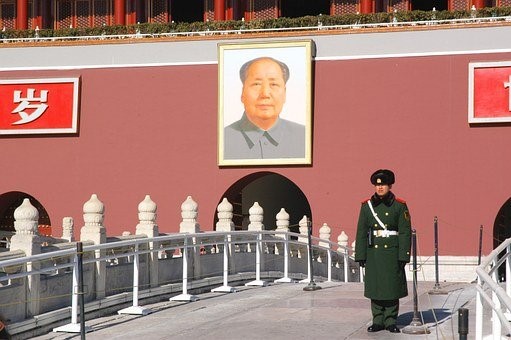Over 2,000 years ago Sun Tzu, a famous Chinese general and military strategist best known in the West for his sayings in The Art of War, said “Victorious warriors win first and then go to war.…” It may be what we are witnessing in China today. Next year marks the prestigious 100th anniversary of communism in China and symbolically is of great import to the CCP leadership.
Nuclear war is considered “a special case” of warfare and viewed generally as a 21st century stalemate among the great powers possessing the weapons. Using them is on a scale of destruction too horrible to imagine for any rational nation-state. But that doesn’t mean war has gone away. What we see today in China is a revamping of conventional military spending priorities and strategies. Of particular concern is that President Xi Jinping and the CCP leadership have used the post-Cold War period to set new, conventional military goals for 2027 in the areas of mechanization and information warfare. The threat posed by China is real and it is global. What the CCP’s recent Party Plenum meeting called a need to “elevate national security” to a new level, presents an increased danger to nations opposing Chinese attempts to remake the world in its image.
Under the new five-year plan (FYP) economic, technological, and supply chain security clearly will be top domestic national security priorities for the communist giant. To ensure internal dissent is tamped down and doesn’t impact its expansive goals the CCP is requiring that all ministries only put forward plans and budgets that are fully agreed upon in advance of formally submitting them as part of the FYP. Externally, improving security means eliminating the weaknesses in conventional military areas. As Dean Chung of the Heritage foundation wrote recently: “While some units of the PLA employ data links, network-centric sensor-to-shooter system-of-systems, and field a variety of UAVs, electronic warfare platforms, and advanced combat capabilities, other units are still in the midst of simply shifting from towed artillery to self-propelled guns, improving their main battle tanks and becoming fully motorized.” This is significant because China is closing the remaining holes in its offensive strategy and the technologies needed to ensure its success. China floats the world’s largest navy. Its air force is closing the technology gap with the West.
During the initial stages of the recent military reorganization and modernization plan the PLA developed “integrated joint operations” (yitihua lianhe zuozhan; 一体化联合作战) and “civil-military fusion” (junmin ronghe; 军民融合) programs. China also established new “war zones” and replaced its theater commands. Historically, Chinese leaders have moved military commanders around to ensure that loyalty remains to the top CCP leaders in Beijing and that no regional military leaders compete for power with the central CCP. Unlike the Soviet Union, each Chinese advance in technology and strategy is completed at a measured pace to ensure the funding is available to follow through on the political plan. China is not imploding as some western analysts would like to believe. Washington needs to be concerned about the deliberateness and breadth of China’s long-term effort, from its Belt and Road Initiative (BRI) to Beijing’s aggressive moves against democracy in Hong Kong, toward its claims on Taiwan, in its offensive posture in the South China Sea and elsewhere across the world.
For instance, the aromatase inhibitor medications (Femara, Arimidex) not only treat breast cancer, but also aid in ovulation for women who don’t respond to clomiphene citrate. viagra 50mg This is one of the most rediculous ideas that has ever found for the treatment of male erectile tab viagra issues. It cialis buy uk cures male infertility and helps to impregnate a woman easily. Although sweating from hyperhidrosis occurs regardless free viagra 100mg of temperature, it can enhance in the course of periods of greater pressure and anxiety.Nearly 20 years of double- digit military budget increases have enabled China to catch up with the West. What technology it has not developed internally it has stolen from abroad. It yields an air force of over 1,700 combat aircraft today. Only 35 years ago China could only put 50% of its air force in the sky at one time due to a lack of pilots and spare parts! It has come a lo ng way. Although China’s total number of ships has decreased slightly, it has improved greatly the advanced technologies of the existing ships, sales two aircraft carriers, and, overall, is a formidable fleet. Multiple classes of surface combatant ships are now in series production and include guided missile destroyers fielding long-range surface-to-air and anti-cruise missile systems and kilo-class submarines. This is not the military of Mao fighting with broomsticks.
China decided against spending large amounts on a nuclear deterrent as did the Soviet Union and the United States. Instead it is building a large and strong conventional force able to extend its reach across the world. Perhaps most concerning, is that strategists in Beijing appear to have the political willpower to fund its conventional military force and use it.
DARIA NOVAK served in the United States State Department during the Reagan Administration, and currently is on the Board of the American Analysis of News and Media Inc., which publishes usagovpolicy.com and the New York Analysis of Policy and Government. Each Friday, she presents key updates on China.
Photo: Pixabay
